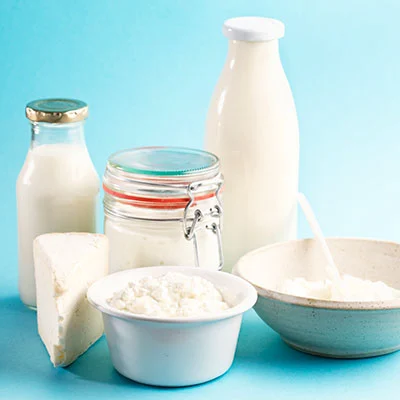Whole Milk, Low-Fat Milk, 2 Percent and Skim: How are They Different?
Whole milk seems to be making a comeback, as retail reports indicate an overall rise in purchases. Though it’s not completely clear what's driving these sales, surveys indicate “better taste” is a top reason people give for switching to higher-fat milk.
You might have questions about what type of milk to drink. There are so many choices that it can be overwhelming. Here's the thing: You can feel good knowing that all cow’s milk, regardless of type, contains the same 13 essential nutrients, including protein, calcium, potassium, phosphorus, riboflavin, pantothenic acid, niacin, zinc, selenium, iodine and vitamins A, D and B12.
Whole Milk vs. Low-Fat Milk: Nutritional Information
Here are a few other facts to gain perspective and choose the type of milk that’s right for you and your family:
- The main difference between the types of milk is the amount of fat, which also is reflected in total calorie differences among different types of milk.
- The Dietary Guidelines recommend low-fat and fat-free dairy foods to balance calorie goals. However, with promising research on the role of whole-fat dairy foods in healthy eating patterns, there’s increasing awareness and interest in enjoying them as a part of a healthy diet.
- Although voluntary, most milks, regardless of fat level, are fortified with vitamin D. If added, it must provide 400 International Units (IU) per quart (about 2.5 micrograms per cup).
- While whole-fat milk is a natural source of vitamin A, some of the vitamin A is lost when the cream is separated to produce lower-fat milk options. Therefore, reduced-fat, low-fat and fat-free milks are fortified with vitamin A to provide at least 2000 IUs per quart (about 150 mcg per cup).
Whole Milk vs. 2 Percent Milk and Skim Milk
To achieve each fat level of milk, the fat is separated from the rest of the liquid, then added back according to the required fat percentage. After that, the milk is pasteurized to destroy unwanted germs, then it's homogenized to achieve a smooth consistency.
Different fat levels in milks influence their textures and how we experience them. Milk fat enhances its richness and flavor, and some people might associate a higher fat content with a more satisfying experience. Even milk's appearance is affected; higher milk fat can make the beverage appear whiter.
No matter which one you enjoy, rest assured cow's milk provides all 13 essential nutrients we need each day. See specific amounts of nutrients for each fat level below.
|
g = grams mg = miligrams mcg = micrograms |
Whole Milk (3.25%) |
Reduced-Fat Milk (2%) |
Low-Fat Milk (1%)
|
Fat-free Milk (Skim) |
|
Calories |
152 |
122 |
106 |
84 |
|
Total Fat |
8 g |
5 g |
2 g |
0 g |
|
Saturated Fat |
5 g |
3 g |
1 g |
0 g |
|
Total Carbohydrate |
12 g |
12 g |
12 g |
12 g |
|
Total Sugars (Includes 0g Added Sugar) |
12 g |
12 g |
12 g |
12 g |
|
Protein |
8 g |
8 g |
8 g |
8 g |
|
Calcium |
306 mg (25% DV) |
309 mg (25% DV) |
310 mg (25% DV) |
325 mg (25% DV) |
|
Vitamin D |
2.39 mcg (10% DV) |
2.77 mcg (15% DV) |
2.61 mcg (15% DV) |
2.71 mcg (15% DV) |
|
Vitamin A |
80 mcg (10% DV) |
203 mcg (25% DV) |
143 mcg (15% DV) |
157 mcg (15% DV) |
|
Potassium |
374 mg (8% DV) |
390 mg (8% DV) |
391 mg (8% DV) |
411 mg (8% DV) |















